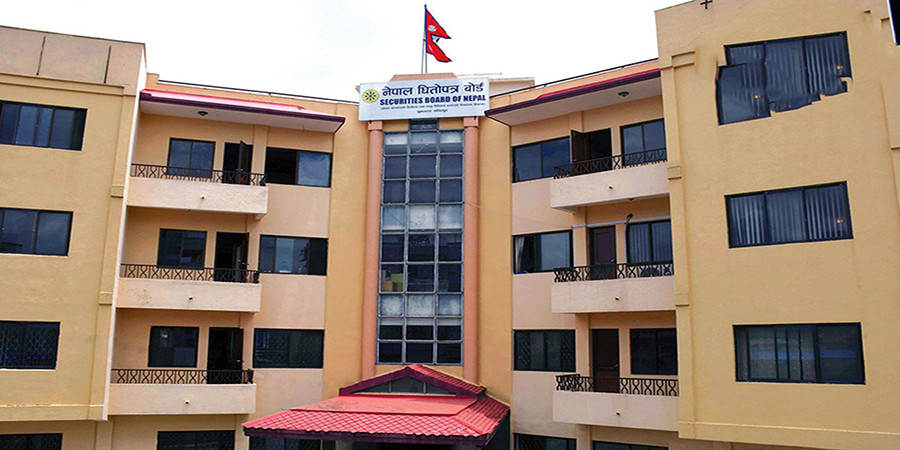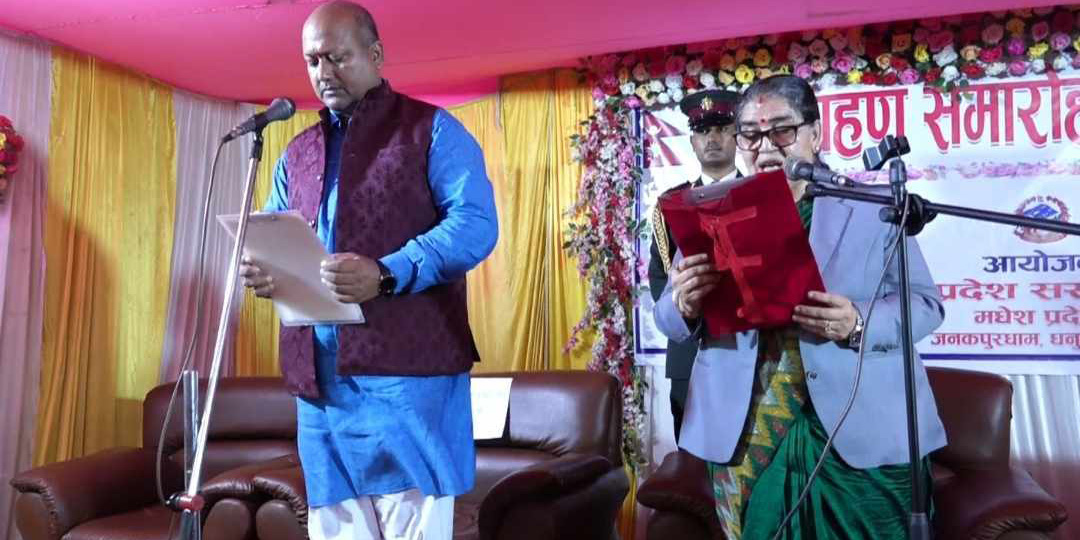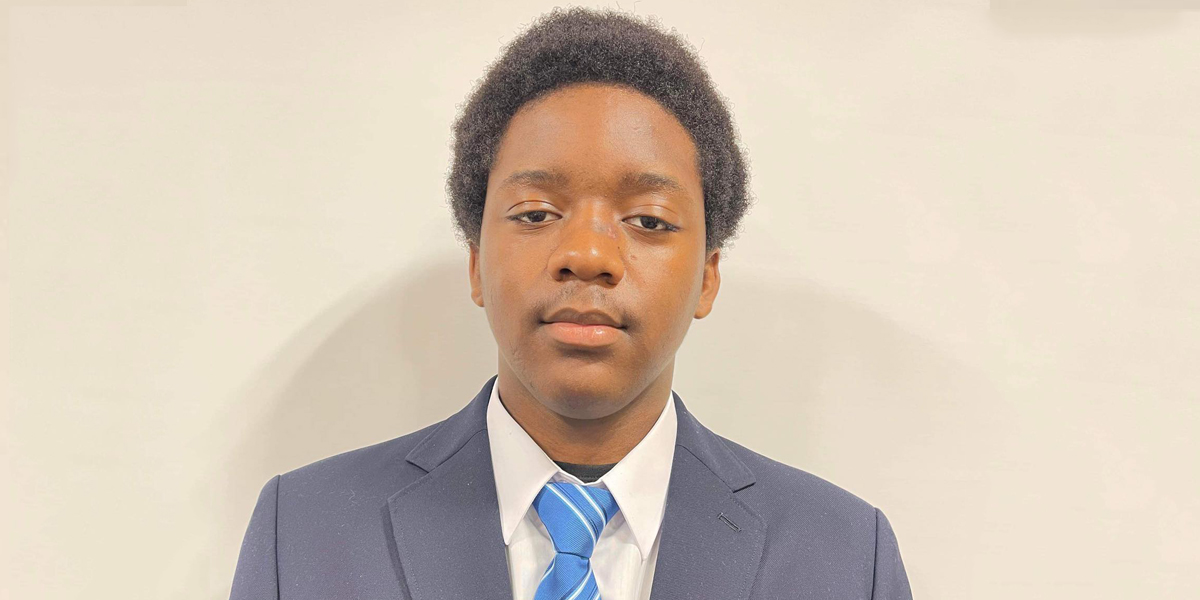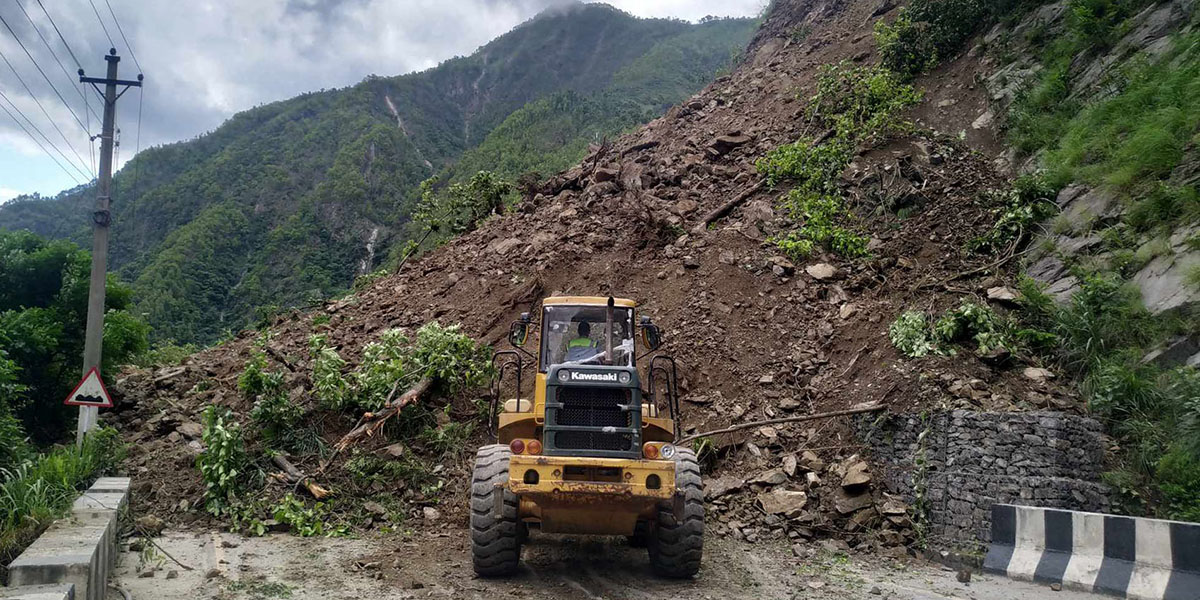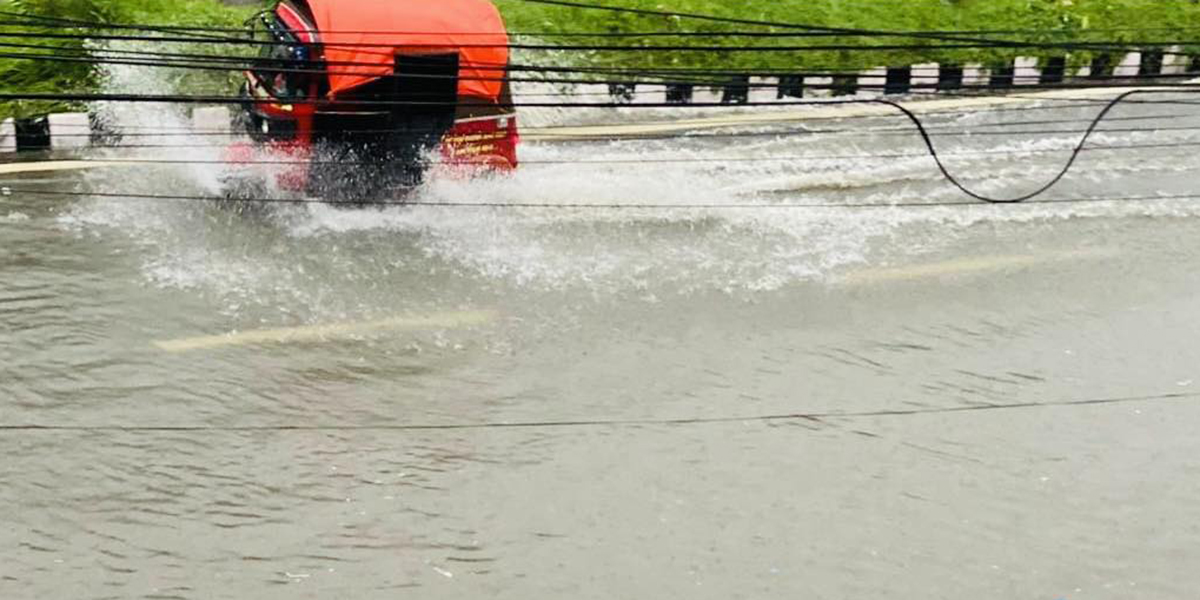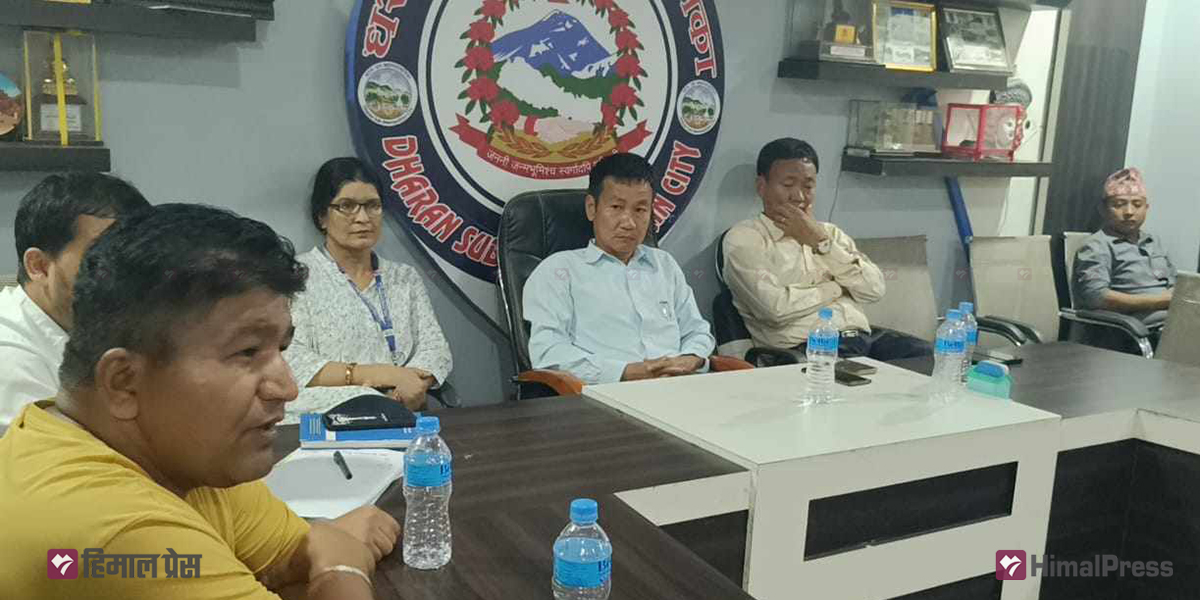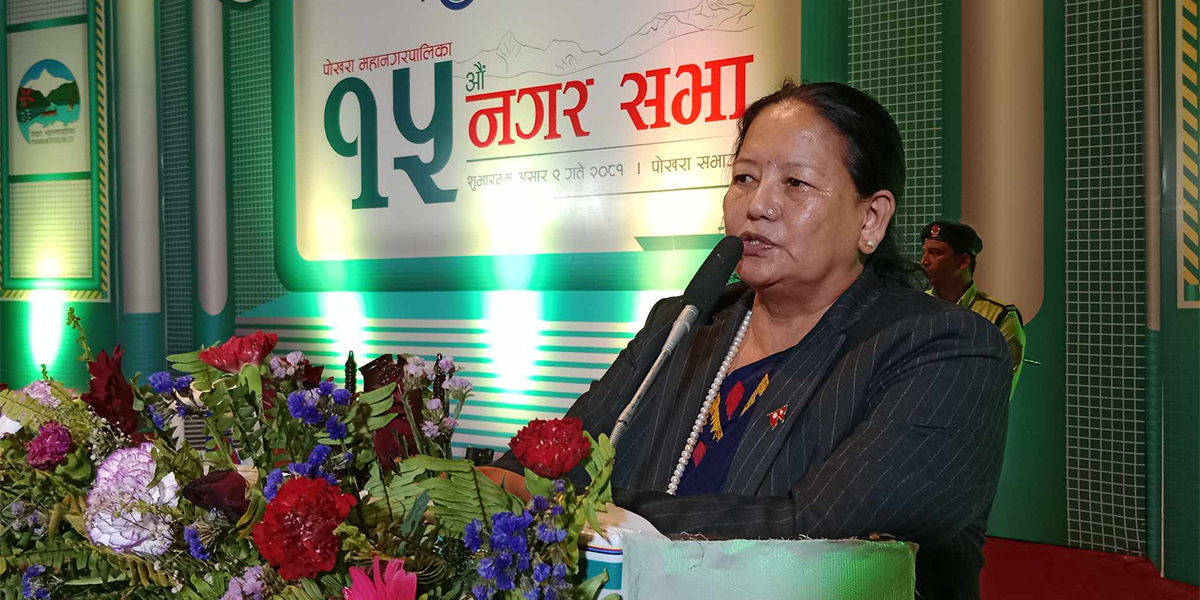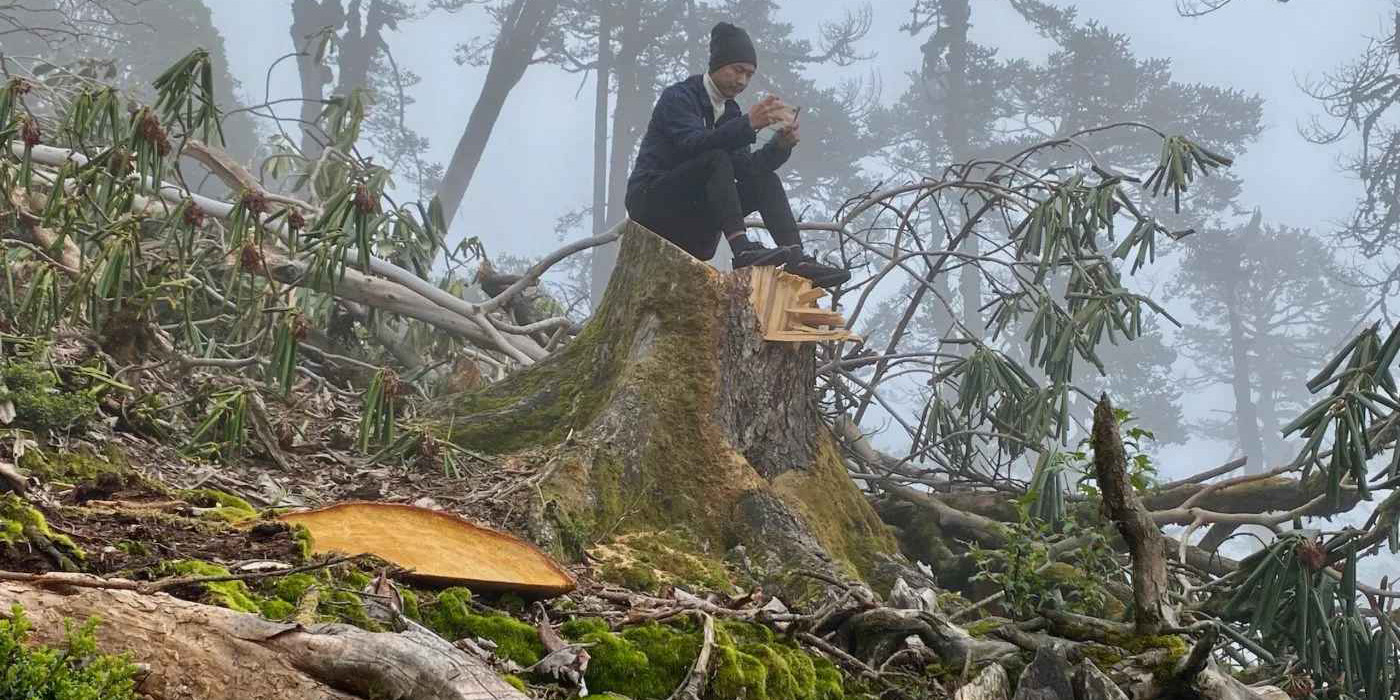 A member of the ethnic Limbu community assesses the damage done to the trees on Mukkumlung hill, or Pathibhara, ahead of a planned controversial cable car facility. (Photo: Marty Logan)
A member of the ethnic Limbu community assesses the damage done to the trees on Mukkumlung hill, or Pathibhara, ahead of a planned controversial cable car facility. (Photo: Marty Logan)
By the time indigenous activists managed to skirt police roadblocks and scramble through the jungle to reach the site, hundreds of trees had already been felled. Loggers, working since dawn, had cleared a path to make way for a cable car project on Mukkumlung, a sacred hill in northeast Nepal revered by the Kirat people. Two weeks later, on 1 Jun, freshly cut stumps gleamed in the fog and rain in a 15m-wide, 2km-long swathe that runs parallel to the stone path and steps leading to the hilltop. This hill, also known as Pathivara after the female deity that bears its name, is a site of immense cultural and spiritual significance, not only to the Kirat, but also to Hindus and Buddhists from Nepal, neighboring India and beyond.
For the local Indigenous Limbu people (one of the Kirat groups), Mukkumlung has been a power center for millennia. They vow to protect it from the cable car development, but face an uphill struggle; the project has the backing of local businesses, major political parties and the Government of Nepal, who argue it will boost tourism and the local economy.
“We will fight until our demand is fulfilled – that the cable car won’t be built,” says Khagendra Fembu Limbu, chairman of the Kanchenjunga Conservation Area Management Council. Recently, he led a group to examine the downed trees, which included eight to 10 types of rhododendron, Nepal’s national flower. He claims the police stopped them from accessing the hill that day.
In March, a confrontation occurred when police tried to carry building materials onto the hill at night to establish a base for the project. Interviewed days later, the coordinator of the Mukkumlung joint struggle committee, Shree Linkhim, told Dialogue Earth: “We told them that we wouldn’t move tonight, tomorrow, or as long as it takes.”
He added: “Seven months ago, the mayor told us: ‘You can do what you want, but we’re not stopping this. We’re going to start cutting down trees anyway; this cable car is going to be built’. That’s when we started guarding the area.”
Legal woes and economic uplift?
In Phungling, a town of 29,000, an opposition campaign against the cable car is being led by Indigenous communities and activists. They are appealing to the Supreme Court to reject the project, which is being developed by IME Group, a Nepali conglomerate led by industrialist Chandra Prasad Dhakal. The company also plans to build a restaurant and hotel at the bottom station. Dhakal, who is chairman and co-founder of IME Group, asserts that the project, with an investment of approximately three billion rupees (USD 22.4 million), will create jobs and economic opportunities for locals.
“Development in culturally significant areas is always sensitive. However, it’s important to balance development and progress with respect for culture, religion and tradition. Local people, authorities, pilgrims and tourists visiting Pathivara strongly support constructing the cable car,” he tells Dialogue Earth via WhatsApp. “During the construction phase, we will prioritize hiring local workers, ensuring that many of the people currently working as porters can transition into these new roles.” He adds that the project will result in “more employment opportunities”.
The decision to approve the project was made by the Nepalese government in 2018. The Ministry of Federal Affairs and General Administration wrote to the National Planning Commission (NPC) in July of that year requesting that it declare the cable car a national priority project. The recommendation was adopted by the NPC the following month.
Despite assurances, activists like Linkhim challenge claims that local people will benefit from the project. “The cable car is not development, despite what the government says. It will benefit the investors, not the community. Even the few jobs created, such as for security guards, will be contracted to companies based in Kathmandu, not local people,” he says.
“Also, what will happen to the porters and the rest of the 700 locals employed here, selling items to tourists, for example?”
Shankar Limbu, an Indigenous lawyer from the same community, has taken the cable car case to Nepal’s Supreme Court. Limbu says various laws “have been completely overlooked” for the cable car project to be green-lighted. These include a 1774 treaty between the Limbu and Prithvi Narayan Shah – considered by many as the unifier of modern Nepal – which protects “land, territory and natural resources”.
Customary cultural and religious practices of the Limbu are also guaranteed by various international laws as well as articles 26 and 32 of Nepal’s constitution, Limbu tells Dialogue Earth.
Wider indigenous resistance
The Limbu-led opposition in Mukkumlung is part of a broader pattern of Indigenous resistance in Nepal. Women from the Majhi community are fighting against a hydropower dam on the Sunkoshi River, located 130 kilometers east of Kathmandu. A feasibility study and environmental impact assessment have been completed, with work expected to commence in 2029. Authorities are hoping to sell some of the power generated to nearby Bangladesh.
The women say they were not consulted over the project, involving Bangladesh and India, which will turn their lives upside down. “What is the point of land if there is no river?” says one local resident, Mamta Majhi. “Our rituals and rites are intimately connected to the Sunkoshi River. It is our life, it is for the celebration of birth, marriage and death. How can we honor our ancestors if we lose our river?”
Another facility facing staunch opposition is the Chhaya Center, a five-year-old complex built on a site sacred to the Newar people in Kathmandu. Encompassing 86,000 square feet, it houses 200 retail stores, a disco, cinema, spa and more.
The Chhaya Center, which once included a sacred lotus pond, is another case that Limbu has brought before the Supreme Court. “There’s no doubt: the law says this land should be retained as a pond… either the Chhaya Center has to be moved or it has to be demolished,” the lawyer tells Dialogue Earth.
The cases being heard by Nepal’s top court are just the tip of the iceberg, according to Limbu. While he acknowledges “Indigenous people are mentioned in the constitution,” in practice, he says, these are just token gestures. “There is no single day that goes by where we don’t get [concerning] information about what’s happening to Indigenous peoples, to their land, to their settlements.”
Bhagabat Narsingh Pradhan is one of many Newar activists who have been fighting to reclaim the centuries-old site from the Chhaya Center. He calls for Kathmandu’s firebrand mayor, known for using bulldozers to destroy illegal buildings, to demolish the 11-floor center.
“It’s our Indigenous cultural and religious identity that is being destroyed,” says Pradhan. “But It’s not only an Indigenous issue – it’s a national issue. Tourists don’t come here to see the Chhaya Center. They come to see our culture, our heritage.”


